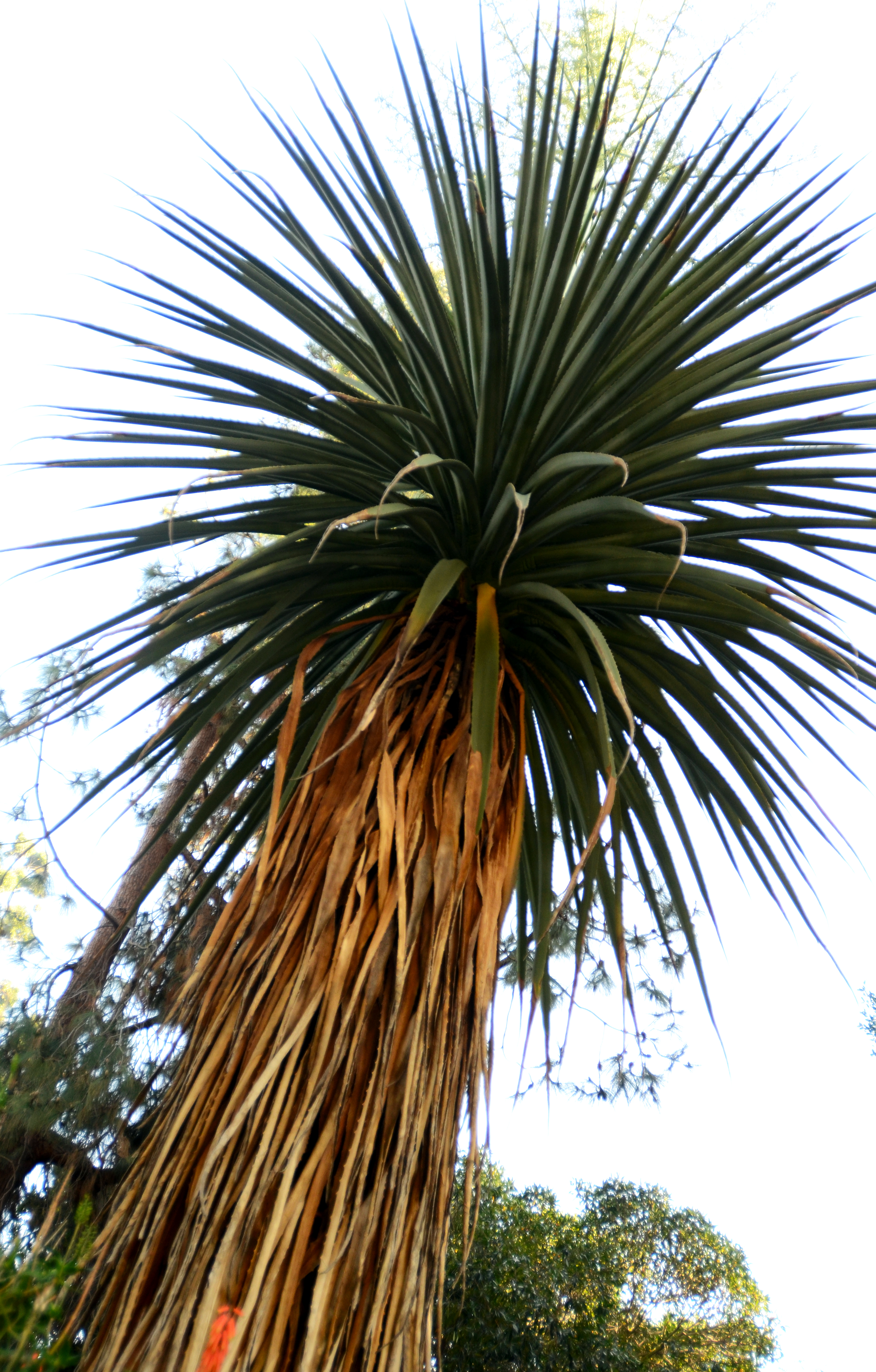Correction: The original version of this article contained an error. The Furcraea macdougalii is roughly 55 feet in height.
A flower, roughly 55 feet in height, slowly emerged through a cluster of trees last fall in the Mildred E. Mathias Botanical Garden.
After years of growing unnoticed, it surprised the Botanical Garden staff when it began to bloom.
Located to the right of the entrance of the garden, the Furcraea macdougalii protrudes with its brown flower ““ called its “inflorescence” ““ into the skyline, contrasting with the buildings and laboratories that dominate UCLA’s south campus.
The plant is monocarpic, meaning that it dies after it blooms and releases its seeds, said Randy Baldwin, general manager of San Marcos Growers, who has cared for plants of this species in the past.
That makes its blooming a rare event that has excited the Botanical Garden staff.
“We cherish such oddities,” said Arthur Gibson, professor of Ecology and Evolutionary Biology and director of the Botanical Garden. “You wait for a quarter of a century for something to flower, and then you also have to celebrate, or deal with, its death in the process.”
The F. macdougalii in the Botanical Garden was brought to UCLA in the 1980s for research purposes through the International Succulent Institute. The plant, which originated in Oaxaca, Mexico, was already growing when it arrived at UCLA, making it difficult to calculate its exact age, Joan Muench, senior Botanical Garden and arboretum manager, said.
Regardless, this is its first and only blooming.
Muench said staffers noticed the plant blooming in September. She added that the height of the plant was a surprise, as well.
A relative of the agave plant family, the F. macdougalii usually grows in Mexico, Central America and the Caribbean, and requires the same maintenance as most dry plants, Baldwin said. It did not receive special attention from the garden’s staff and grew under similar conditions to the plants surrounding it, Muench said.
After growing for decades, the F. macdougalii stores food in a gigantic flower stalk. When the flower drops its seeds, the plant dies and is replaced by seedlings, Gibson said.
The reproductive strategy used by the plant is common even in the animal kingdom, among certain species of squid, Gibson said.
“Many plants in your garden ““ like green beans, zucchini, tomatoes, bell peppers, maize ““ are annuals, which live less than one year,” Gibson said, “(But) it is more spectacular and very uncommon for a long-lived plant to flower once and then die.”
The plant is expected to die around fall of this year, and will then be removed from the garden. But the death of the plant may not mark the end of the species in the garden.
If the bulbs of the seedlings take root in the garden, more F. macdougalii will grow, making the plant more common in the area, Baldwin said.
These plants will slowly die out and the population will decrease, making the plant rare again, Baldwin said.
Yet, the garden’s staff is unsure if they want the bulbs of the F. macdougalii plant to continue growing in the garden.
While the plant has presented a new attraction, it has come with a new challenge to the staff of the Botanical Garden who have never dealt with a plant of this species before, Muench said.
